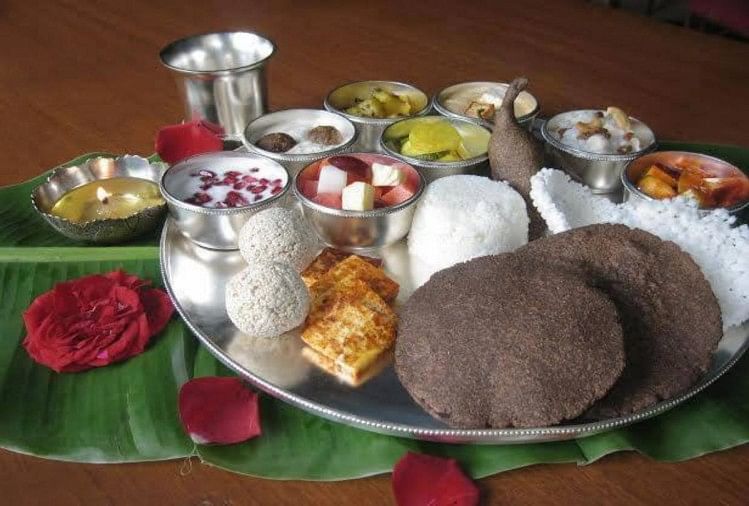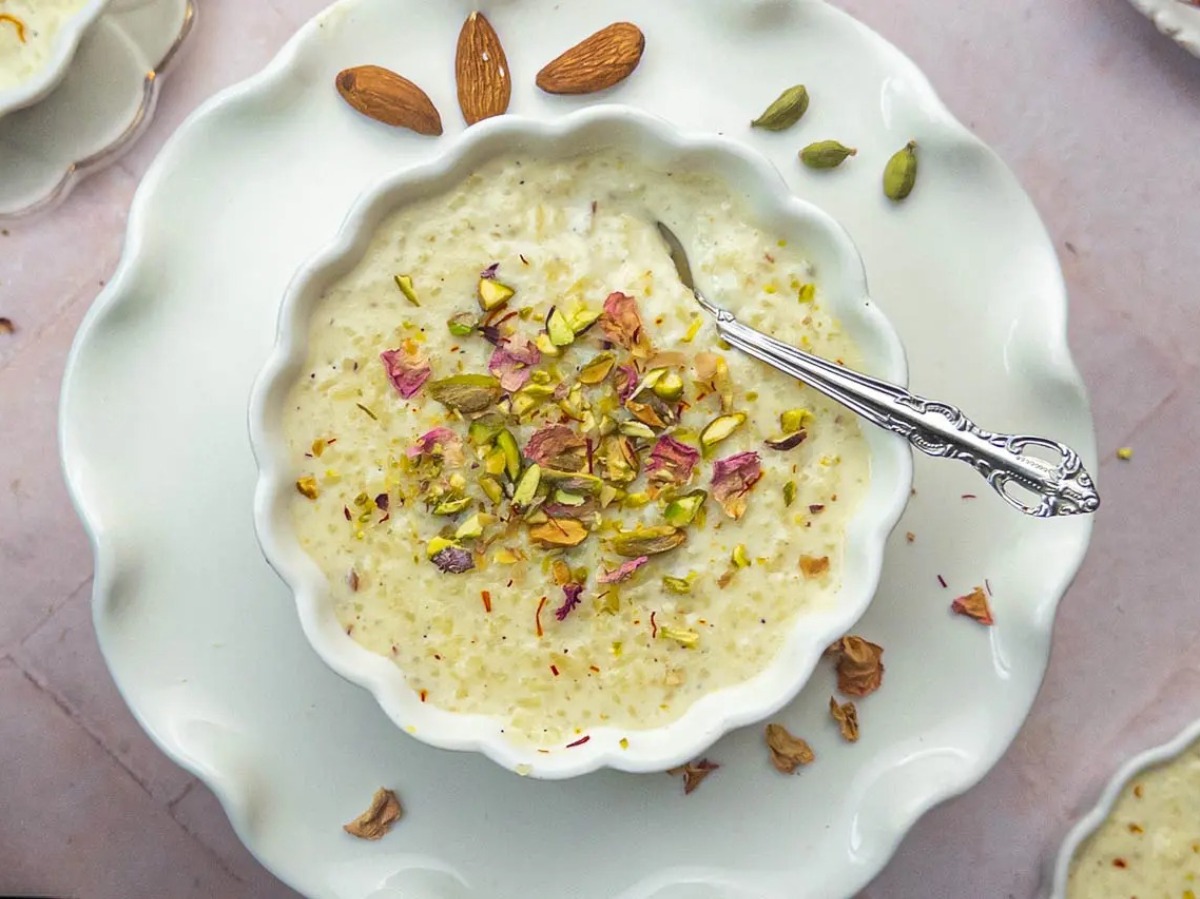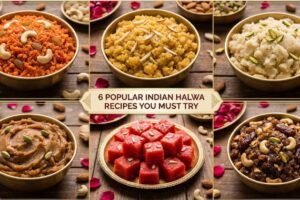
Sawan 2025 Bhog Prasad Recipes for Somvar Vrat: 6 Divine Ujjain Offerings to Lord Shiva
The sacred month of Sawan (Shravan) in 2025, starting on July 11 and ending on August 9, is a time of deep devotion to Lord Shiva. This auspicious period, marked by fasting and prayers, especially on Mondays (Sawan Somvar Vrat), is believed to bring peace, prosperity, and spiritual growth. Offering Sawan 2025 bhog prasad is a sacred practice to honour Lord Shiva, believed to have consumed the Halahal poison during the Samudra Manthan to protect the universe.

Ancient sacred bhog recipes, rooted in mythology and tradition, are satvik (pure, vegetarian, and free of onion/garlic) and emphasize simplicity, purity, and devotion. In this blog, we share five authentic, easy-to-make Sawan 2025 bhog prasad recipes, each with a short story rooted in mythology or tradition, designed to elevate your spiritual practice. These recipes are crafted to align with fasting rules, ensuring they are vrat-friendly and divinely inspired.
Why Offer Bhog Prasad During Sawan Somvar Vrat?
Sawan is dedicated to Lord Shiva, who consumed the deadly Halahal poison during the Samudra Manthan to protect the universe. Offering Sawan 2025 bhog prasad is a way to express gratitude and seek his blessings for health, wealth, and marital harmony. The Mondays of Sawan, known as Shravan Somvar, are particularly significant, with devotees observing fasts and performing rituals like Jalabhishek and Rudrabhishek. The prasad, prepared with devotion, is believed to carry divine blessings when offered to the Shivling and shared among devotees.
 Each recipe below is satvik, avoiding non-vegetarian food, garlic, onions, and other tamasic ingredients, as recommended during Sawan. These recipes are rooted in Hindu traditions, believed to be favoured by Lord Shiva for their purity and cooling properties. Let’s dive into these sacred Sawan 2025 bhog prasad recipes, each accompanied by a story that adds spiritual depth.
Each recipe below is satvik, avoiding non-vegetarian food, garlic, onions, and other tamasic ingredients, as recommended during Sawan. These recipes are rooted in Hindu traditions, believed to be favoured by Lord Shiva for their purity and cooling properties. Let’s dive into these sacred Sawan 2025 bhog prasad recipes, each accompanied by a story that adds spiritual depth.
-
Panchamrit: The Elixir of Five Nectars
Story Behind Panchamrit
In ancient texts like the Shiva Purana, Panchamrit is described as a divine offering used during the abhishekam (ritual bathing) of the Shivling. It is believed that when Lord Shiva drank the Halahal poison, Goddess Parvati offered him Panchamrit—a blend of five sacred ingredients—to soothe his burning throat. This mixture, symbolizing the five elements (earth, water, fire, air, ether), is a staple bhog during Sawan for its spiritual and purifying qualities.
Ingredients (Serves 4)
– 1 cup raw cow’s milk
– 1/2 cup fresh curd (yogurt)
– 2 tbsp pure honey
– 1 tbsp ghee
– 2 tbsp sugar or jaggery
– Optional: 5-6 saffron strands, soaked in 1 tbsp warm milk
Method
- In a clean, silver or brass vessel, pour the raw cow’s milk.
- Add fresh curd, honey, ghee, and sugar, stirring gently to combine.
- If using saffron, add the soaked strands for a divine aroma and color.
- Chant “Om Namah Shivaya” while mixing to infuse the offering with devotion.
- Offer to the Shivling during puja, then distribute as Sawan 2025 bhog prasad.
Why It’s Sacred
- Panchamrit is considered an elixir that purifies the soul and body. Its cooling ingredients align with Shiva’s need for soothing offerings during Sawan. It’s simple, satvik, and universally offered in Shiva temples.
-
Makhana Kheer: The Lotus Seed Pudding
Story Behind Makhana Kheer
According to folklore, during Sawan, devotees offered Lord Shiva makhana (fox nuts or lotus seeds) to honor his ascetic nature. Makhana, a satvik ingredient, was abundant in ancient India’s lakes and was believed to please Shiva for its purity and light texture. In the Skanda Purana, makhana-based offerings are mentioned as ideal for fasting devotees seeking spiritual clarity.
Ingredients (Serves 4)
– 1 cup makhana (fox nuts)
– 1 liter full-fat cow’s milk
– 1/2 cup sugar or jaggery
– 1/4 tsp cardamom powder
– 2 tbsp chopped almonds and cashews
– 1 tbsp ghee
– 5-6 saffron strands (optional)
Method
- Heat ghee in a pan and roast makhana until crisp (2-3 minutes). Set aside.
- Boil milk in a heavy-bottomed pan, then add roasted makhana.
- Simmer on low heat for 15-20 minutes until the makhana softens and the milk thickens.
- Add sugar, cardamom powder, and nuts, stirring gently.
- If using saffron, add it for a divine flavor. Cool slightly and offer as Sawan 2025 bhog prasad to Lord Shiva.
Why It’s Sacred
Makhana is light, satvik, and energy-rich, making it ideal for fasting. Its association with purity and abundance resonates with Shiva’s divine qualities.
-
Sabudana Khichdi: A Nutritious Vrat Delight
Story Behind Sabudana Khichdi
Legend has it that during Sawan, Goddess Parvati prepared a simple yet nourishing dish for Lord Shiva during their earthly sojourn. Exhausted from their travels, Shiva craved a light meal that would sustain him through his meditations. Parvati, with her divine wisdom, crafted a dish from sago pearls (sabudana), which became a staple for devotees fasting in his honor. This dish symbolizes purity and sustenance, perfect for Sawan 2025 bhog prasad.
Ingredients (Serves 4)
– 1 cup sabudana (sago pearls)
– 2 medium potatoes, boiled and cubed
– 1/4 cup roasted peanuts, coarsely ground
– 1 tsp cumin seeds
– 2 green chilies, finely chopped
– 1 tbsp ghee
– Rock salt (sendha namak) to taste
– Fresh coriander leaves, chopped
– Juice of 1 lemon
Method
- Rinse sabudana thoroughly and soak in water for 4-5 hours or overnight. Drain well.
- Heat ghee in a pan, add cumin seeds, and let them splutter.
- Add green chilies and boiled potatoes, sautéing for 2-3 minutes.
- Add soaked sabudana and ground peanuts, stirring gently on low heat for 5-7 minutes until translucent.
- Season with rock salt, add lemon juice, and garnish with coriander leaves.
- Offer to Lord Shiva as Sawan 2025 bhog prasad before serving.
Why It’s Special
Sabudana Khichdi is light, gluten-free, and energy-packed, making it ideal for fasting. Its simplicity reflects Lord Shiva’s humble nature, and its satvik ingredients align with vrat rules.
-
Malwa-Style Kuttu ka Halwa: The Buckwheat Sweet | Vrat Friendly Recipe
Story Behind Kuttu ka Halwa
In Ujjain, buckwheat (kuttu) is a revered vrat-friendly grain, believed to have been offered to Lord Shiva by local devotees during ancient times. The Skanda Purana mentions Malwa (the region encompassing Ujjain) as a sacred land where satvik foods like kuttu were used in Shiva worship. This halwa, prepared with ghee and jaggery, is a traditional offering at Mahakaleshwar Temple during Sawan Somvar.
Ingredients (Serves 4)
– 1 cup kuttu atta (buckwheat flour)
– 1/2 cup ghee
– 1/2 cup jaggery, grated
– 2 cups water
– 1/4 tsp cardamom powder
– 2 tbsp chopped almonds and raisins
Method
- Heat ghee in a pan, add kuttu atta, and roast on low heat until golden and aromatic (5-7 minutes).
- In a separate pan, dissolve jaggery in water and bring to a boil to form a syrup.
- Slowly pour the jaggery syrup into the roasted kuttu, stirring to avoid lumps.
- Cook until the mixture thickens, then add cardamom powder and nuts.
- Offer as Sawan 2025 bhog prasad at the Mahakaleshwar Temple or home puja.
Why It’s Special in Ujjain
Kuttu is cooling and gluten-free, ideal for fasting in Ujjain’s warm climate. Its local availability in Malwa makes it a staple offering, symbolizing simplicity and devotion.
Why It’s Special
Kuttu ki puri is a staple vrat food, gluten-free, and easy to digest. Its earthy flavor and crisp texture make it a delightful offering.
-
Bhaang Peda: A Sacred Sweet Offering
Story Behind Bhaang Peda
Bhaang is closely associated with Lord Shiva, who is said to have consumed it to cool his body after drinking the Halahal poison. In a lesser-known tale, Parvati prepared bhaang-infused pedas to help Shiva relax during Sawan’s intense worship. While bhaang is optional for home preparation, this peda remains a traditional Sawan 2025 bhog prasad.
Ingredients (Serves 4)
– 1 cup khoya (mawa)
– 1/2 cup powdered sugar
– 1/4 tsp cardamom powder
– 1 tsp bhaang paste (optional, consult local regulations)
– 2 tbsp milk
– Chopped pistachios for garnish
Method
- Crumble khoya in a pan and cook on low heat until soft.
- Add powdered sugar and stir until the mixture thickens.
- Mix in cardamom powder and bhaang paste (if using) with milk for a smooth consistency.
- Cool slightly, shape into small pedas, and garnish with pistachios.
- Offer as Sawan 2025 bhog prasad during puja.
Why It’s Special
Bhaang peda is a cooling, aromatic sweet that resonates with Shiva’s love for bhaang. If omitting bhaang, the peda remains a satvik delight.
-
Thandai: The Cooling Drink of Sawan

Story Behind Thandai
During Sawan, when Lord Shiva meditated under the scorching sun, devotees offered him a cooling drink made of milk, nuts, and spices to ease his discomfort. This drink, known as thandai, became a symbol of devotion and refreshment, especially during Mahashivratri and Sawan. It’s a must-have Sawan 2025 bhog prasad for its soothing properties.
Ingredients (Serves 4)
– 1 liter full-fat milk
– 1/4 cup almonds, soaked and peeled
– 2 tbsp poppy seeds (khuskhus)
– 1 tbsp melon seeds
– 1/2 tsp cardamom powder
– 1/2 cup sugar
– 1 tsp rose water
– Saffron strands (optional)
Method
- Blend almonds, poppy seeds, and melon seeds with a little milk to form a paste.
- Boil milk, add the paste, sugar, and cardamom powder, and simmer for 5 minutes.
- Cool, add rose water and saffron, and refrigerate.
- Serve chilled as Sawan 2025 bhog prasad after offering to Lord Shiva.
Why It’s Special
Thandai is refreshing and satvik, perfect for Sawan’s warm monsoon days. Its rich, nutty flavor makes it a divine offering.
-
Kesariya Phalahari Kheer: A Sweet Devotional Treat

Story Behind Kesariya Phalahari Kheer
A devotee once offered Lord Shiva a simple kheer made with sago and saffron during Sawan, seeking his blessings for prosperity. Pleased with the devotee’s sincerity, Shiva granted his wishes, making this kheer a popular Sawan 2025 bhog prasad. This recipe, infused with saffron, symbolizes purity and abundance.
Ingredients (Serves 4)
– 1/2 cup sabudana (sago pearls)
– 1 liter milk
– 1/2 cup sugar
– 1/4 tsp saffron strands, soaked in warm milk
– 1/4 tsp cardamom powder
– 2 tbsp chopped almonds and cashews
– 1 tbsp ghee
Method
- Soak sabudana for 2 hours, then drain.
- Heat ghee in a pan, lightly roast sabudana, and set aside.
- Boil milk, add roasted sabudana, and cook on low heat until thickened (about 15 minutes).
- Add sugar, saffron milk, cardamom powder, and nuts. Stir well.
- Offer as Sawan 2025 bhog prasad after cooling slightly.
Why It’s Special
This kheer is rich, creamy, and vrat-friendly, making it a perfect offering for Lord Shiva. Its saffron hue adds a divine touch.
Ujjain-Specific Bhog Recipes for Lord Shiva During Sawan
In Ujjain, the Mahakaleshwar Temple’s traditions emphasize offerings that reflect local ingredients and ancient practices. These recipes are inspired by the region’s devotion to Lord Shiva, particularly during Sawan, when thousands flock to offer bhog at the Jyotirlinga.
Tips for Offering Sawan 2025 Bhog Prasad
- Purity is Key: Prepare prasad in a clean environment, using fresh ingredients. Avoid tamasic foods like garlic, onions, and non-vegetarian items.
- Perform with Devotion: Chant “Om Namah Shivaya” while preparing and offering prasad to infuse it with spiritual energy.
- Offer to Shivling: Place the prasad before the Shivling during puja, then distribute it among devotees for blessings.
- Follow Vrat Rules: Use rock salt (sendha namak) and avoid grains like wheat and rice, opting for buckwheat, sago, or samak instead.
- Timing Matters: Offer prasad during auspicious muhurts like Brahma Muhurat or Nishita Muhurat for maximum spiritual benefits.
What are vrat-friendly breads for Sawan?
Kuttu Ki Puri or Paratha
Buckwheat flour parathas, seasoned with ajwain and cooked in ghee, are a wholesome and gluten-free fasting option. Deep-fried puris made from buckwheat flour, often paired with potato curry.
To avoid grains during sawan like suji, wheat, and rice during this period. Instead, devotees often opt for satvik foods like fruits, milk, nuts, and certain vegetables.
Conclusion: Embrace the Divine with Sawan 2025 Bhog Prasad
Sawan 2025 offers a sacred opportunity to connect with Lord Shiva through fasting, prayers, and offerings. These Sawan 2025 bhog prasad recipes—Sabudana Khichdi, Kuttu Ki Puri, Bhaang Peda, Thandai, and Kesariya Phalahari Kheer—are not just delicious but deeply rooted in devotion. By preparing these satvik dishes with love and offering them during Sawan Somvar Vrat, you invite Bholenath’s blessings for peace, prosperity, and spiritual growth.
Learn every recipe with NFCI
These dishes are an integral part of Sawan Somwar Bhog prasad traditional recipes in India, offered to Lord Shiva as bhog (sacred offerings). If you love food and enjoy cooking nutritious recipes for yourself and your loved ones, consider taking culinary courses at NFCI. NFCI provides practical training and essential skills to help students not only eat healthily but also start their own business ventures in the industry. Want to learn more about us or explore? read out our Ganpati Chaturthi traditional recipes blog! Check out our videos on YouTube, Instagram, or Facebook and start learning today! Call us right now at +91-98880112222 and learn the most demanded skill in the industry!





